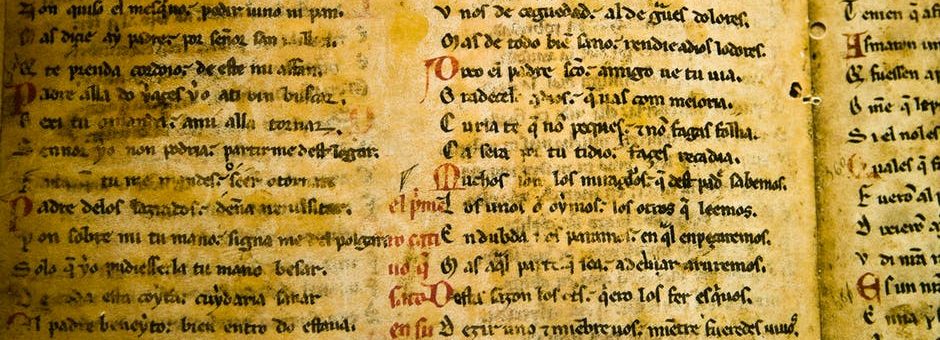In one of my previous articles that can be found here, I addressed the question of whether there exists an etymological difference between the words ‘Holy Ghost’ and ‘Holy Spirit’. I had promised to do a write-up about why some Bible versions ‘miss’ some verses or words, and my friend Tayebwa Allan did well to remind me. In this article therefore, I will address the question of bible translations, and whether we can surely trust the Bibles we have.
I believe without addressing this question, the question of whether we can take the text seriously will be hard to address. Let us remember that translations exist because of the incident that occurred at the tower of Babel in Genesis 11. If you follow the narrative here, you will notice that variation of languages can be a recipe for disaster, as we easily misunderstand and misinterpret one another’s words.
“You say it is heresy to speak of the Holy Scriptures in English. You call me a heretic because I have translated the Bible into the common tongue of the people. Do you know whom you blaspheme? Did not the Holy Ghost give the Word of God at first in the mother-tongue of the nations to whom it was addressed?” (Fountain, John Wycliffe, pp. 45-47)
A Brief History of Bible Translations
The history of Biblical translation is muddled with murder and intrigue, exhumations and burnings, defiance and love. From the forceful inclusion of the Apocryphal books into the Latin vulgate against St. Jerome’s conscience and advice (347-420), to the exhumations of John Wycliffe’s remains for burning by Pope Martin V, for the crime of having translated the Bible from Latin to English (1320-1384), and even to the burning of William Tyndale in 1536 for translating the whole Bible from Hebrew and Greek to the ‘vulgar vernacular English language’ as the Catholic church called it, people translated bibles at their own cost, often the cost of life.
Each of these men involved in translations was an ardent scholar, skilled in languages and writing. The first known Bible translation, the Septuagint occurred around 280-250 BC. The Septuagint, also known as LXX was a translation of the old testament from Hebrew to Greek. ‘As the Jewish people were scattered, Greek, rather than Hebrew, became the commonly spoken language.’ (Wycliffe.net).
Other translations would include the Latin Vulgate (4th Century), Georgean Bible (5th Century), the Chinese Bible (8th Century), then the English Bibles by Wycliffe, Tyndale, as well as the German Bible by Martin Luther in the 16th century. St. Jerome believed that to be ignorant of scripture is to be ignorant of Christ. And I believe this to be absolutely true.
The whole reason as to why God gave us His word, in a cultural context with human language is that God desires every man to hear and read His word himself, for that is how God speaks to His people. This is why translations are very sensitive. How do we bring God’s word to every tongue and tribe without altering the meaning of the texts? This is easier asked than answered. That is why I mentioned that the translators of old were men of excellent skill. Worthy of note especially is that the Spirit of God was at work, through the weak human instruments, to bring His word to you and I that in reading and believing it we may have life eternal.
It is also worth noting that all authentic translations are based on manuscripts. The Septuagint and Vulgate and Tyndale’s English Bible were based on the Hebrew Old Testament and Greek New Testament. This is important to understand. These manuscripts are available, in the Masoretic Texts, the Septuagint, the Sinaiticus, Vaticanus, etc. It’s also important to note that these original manuscripts contain some minor variations, and these variations can be seen in the various main English translations.
How Significant are the Variations in the Bible Translations?
There is an excellent article concerning this question, which I will quote at length. The full article can be found here, for the benefit of those who desire to deepen their knowledge in the translations of the holy writ.
To address the question of variations in various texts, as I mentioned before, we do not look at NKJV as our standard of judgement, a mistake many make, but we rather must go back to the manuscripts. If we do, we will notice that, as Daniel Bowman is a graduate student at Grand Rapids Theological Seminary clearly articulates,
There are two kinds of copying errors: (1) those done accidentally, and (2) those done intentionally.
Accidental. Many of the variations in the biblical manuscripts can be easily explained in several ways. First, bad eyesight was common because the Bible was copied in places which often were poorly lit. Scribes, working with the text for many hours each day, sometimes had trouble reading the details necessary to correctly write each work and phrase.
Second, a word may be replaced by a similar sounding word. Sometimes, instead of each scribe reading a manuscript and copying it, one scribe would read the manuscript aloud while others copied the words. For instance, 1 John 1:4 states, “We write these things so that ____ joy may be full.” Does this verse say that the author wrote so that “your joy may be full” or so that “our joy may be full”? Multiple manuscripts contain each reading. Just like “your” and “our” in English, the Greek words ‘υμων and ‘ημων are spelled nearly identically and they sound similar. Either of these could have been the original. Though the meaning of the sentence is slightly changed depending on which word was written, no important beliefs are challenged. This kind of mistake is merely a misspelling.
A third type of unintentional mistake is caused by repeated words. In John 17:15, one manuscript is missing the following part in the bracket: “I do not pray that you should take them from the [world but that you should keep them from the] evil one.” Notice how the sentence still reads properly with the bracketed material, even though the meaning was changed.
The Greek manuscript that the scribe was copying from most likely read:
………………………… α̉υτους ε̉κ του
κοσμου………………………………….
………………………… α̉υτους ε̉κ του
πονηρου…………………………………
After reading and copying the first line, a scribe’s eyes could easily recognize the three identical words on the third line and then begin the copying on the fourth line.
Intentional. Scribes, in their earnestness to have the correct text, would try to correct the text. Sometimes scribes would combine together multiple passages that were similar, called harmonizing. When talking about Jesus on the cross, John 19:20 described a sign that “was written in Hebrew, in Latin, and in Greek.” Some manuscripts of Luke have this phrase included in 23:38, as the scribes had tried to make the two passages say the same thing.
Another intentional mistake is called conflation. This is when a scribe would combine multiple readings instead of choosing one over another. An example of this is the end of Luke. Some manuscripts said that the disciples ‘were continually in the temple blessing God’ while others read ‘were continually in the temple praising God.’ Rather than discriminating between the two, later scribes decided that it was safest to put the two together, and so they invented the reading ‘were continually in the temple praising and blessing God.’
Conclusion
The Bible, despite textual variations, has been preserved over the centuries with a remarkable degree trustworthy. Though variations exist, the four rules of textual criticism allow us to have a Bible that is very close to what the prophets of Israel and Jesus’ followers originally wrote.
Keith E. Gephart, a professor at International Baptist College in Tempe, Arizona, summarized how these variations are actually not problems:
It is a commonly recognized fact that 80-85 percent of all the manuscript evidence is in total agreement even on such matters as spelling and punctuation. [He added in a footnote that the percentage “rises considerably” when spelling and punctuation differences are eliminated.] …. [S]ome of these variants do affect the theology of those particular verses. But even in these instances, our doctrine is not affected since there are so many other verses which teach the doctrine in question.
We have good reason to be confident that the Bible as we have it today is indeed faithful to the original.
And because this is so, it is ill-advised and misleading for a Clergy to tell his congregation to burn any Bible translation, without knowledge of how translations come to be. We must not think that the NKJV is the only trustworthy version. In fact, concerning this very point, Dr. James White wrote a very helpful article that can be found here.
(Please feel free to leave a comment in the comments section, or email me at theprincejose@yahoo.com)

